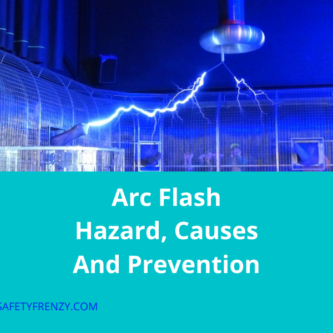Image: “Article Feature Image” by Bing is licensed under [CC BY-NC-SA 4.0]. Source: Bing Graphic Art.
Sewing machines play a crucial role in the lives of many people, from professional tailors to hobbyists.
However, like any mechanical device, sewing machines are susceptible to issues, and one common problem is motor burnout. Overuse, inadequate maintenance, electrical issues, and overheating are the main causes of sewing machine motor burnout.
In this article, we will explore the causes of sewing machine motor burnout and provide tips to prevent it.
By understanding the underlying factors and implementing proper maintenance practices, you can prolong the lifespan of your sewing machine.
Understanding Sewing Machine Motors
Sewing machines rely on motors to power their operations. There are various types of sewing machine motors available, including servo motors and clutch motors.
These motors provide the necessary mechanical energy to drive the machine’s needle, bobbin, and other components.
They are designed with specific features to ensure smooth and efficient performance.
Causes of Sewing Machine Motor Burnout
Overuse and Excessive Workload
Sewing machines are built to handle a certain workload, and exceeding those limits can lead to motor burnout.
Continuous operation without breaks strains the motor, increasing the risk of overheating and component failure.
Additionally, frequently using high-speed settings puts additional stress on the motor, potentially leading to burnout.
Inadequate Maintenance and Cleaning
Neglecting regular maintenance and cleaning can contribute to motor burnout.
Dust and lint can accumulate inside the machine, obstructing proper ventilation and causing the motor to overheat.
Lack of lubrication in the moving parts can also increase friction and wear, eventually damaging the motor.
Electrical Issues and Power Surges
Electrical problems pose a significant risk to sewing machine motors.
Fluctuations in the power supply, such as voltage spikes or drops, can overload the motor and cause it to burn out.
An incompatible voltage or faulty wiring can damage the motor and other electrical components.
For more information on the effect of voltage on your sewing machine, read my comprehensive article: Voltage Drop Alert: Shielding Your Sewing Machine Motor from Harmful Effects
Overheating and Ventilation Problems
Proper cooling is essential for maintaining the optimal temperature of the sewing machine motor.
Insufficient cooling mechanisms within the machine can result in overheating, leading to motor burnout.
Blocked ventilation openings or obstructions around the motor can also impede airflow, increasing the risk of overheating.
Read also my comprehensive article: Burnout Danger: The Hidden Risks of Motor Overheating
Signs and Symptoms of Sewing Machine Motor Burnout
Recognizing the early signs of motor burnout can help you take prompt action to prevent further damage. Keep an eye out for the following indicators:
- Unusual noises or vibrations coming from the motor.
- Motor slowdown or complete stoppage during operation.
- A distinct burning smell or smoke emanating from the motor.
- Tripping circuit breakers or blowing fuses when the machine is in use.
Prevention and Maintenance Tips
To avoid sewing machine motor burnout, follow these preventive measures:
Regular Cleaning and Maintenance Routine
Clean your sewing machine regularly, removing dust and lint that can clog the internal components.
Follow the manufacturer’s guidelines for lubricating the moving parts to reduce friction and enhance performance.
Using the Machine Within Recommended Limits
Avoid overworking the machine by taking breaks during extended use.
Operating the machine at excessively high-speed settings can strain the motor, so it’s important to use a speed appropriate for the task at hand.
Ensuring Proper Electrical Connections
Protect your sewing machine from power fluctuations by using a surge protector. Ensure that the voltage supply is compatible with your machine’s requirements.
Check the wiring periodically to identify and address any issues promptly.
Proper Ventilation and Cooling
Keep the motor area free from obstructions, allowing sufficient airflow. Avoid placing the machine in enclosed spaces or covering it during operation. This will help dissipate heat and prevent overheating.
Repair and Replacement Options
If your sewing machine motor does burn out, you have a few options for repair or replacement:
- Seek professional repair services from authorized technicians who specialize in sewing machines.
- Consider troubleshooting and attempting minor repairs yourself if you have the necessary knowledge and skills.
- Evaluate the possibility of replacing the motor, taking into account factors such as cost, availability, and compatibility with your sewing machine model.
Conclusion
Sewing machine motor burnout can be prevented by understanding the causes and implementing proper maintenance practices.
Overuse, inadequate maintenance, electrical issues, and overheating are common culprits behind motor burnout.
By following the recommended preventive measures and promptly addressing any signs of trouble, you can extend the lifespan of your sewing machine and ensure optimal performance for years to come.
you work With Electricity! Don’t leave empty-handed!
Looking to stay ahead of the game in the world of electrical engineering? Subscribe to my YouTube channel and gain access to exclusive content you won’t find anywhere else!
The staff I recommend (Amazon Affiliate Links to products I believe are high quality):
- Economy 120 Volt/60Hz AC Power Source – Step-Down Voltage & Frequency Converters 1800W
- UNI-T Digital Multimeter Tester UT139C
- 50-Amp Extension Cord for RV “100ft”
- Voltage Stabilizer 110/220v
- Hair Dryer “best selling“
- TOSHIBA EM131A5C-BS Countertop Microwave Ovens
Disclaimer: This contains affiliate links to Amazon products. I may earn a commission for purchases made through these links.


